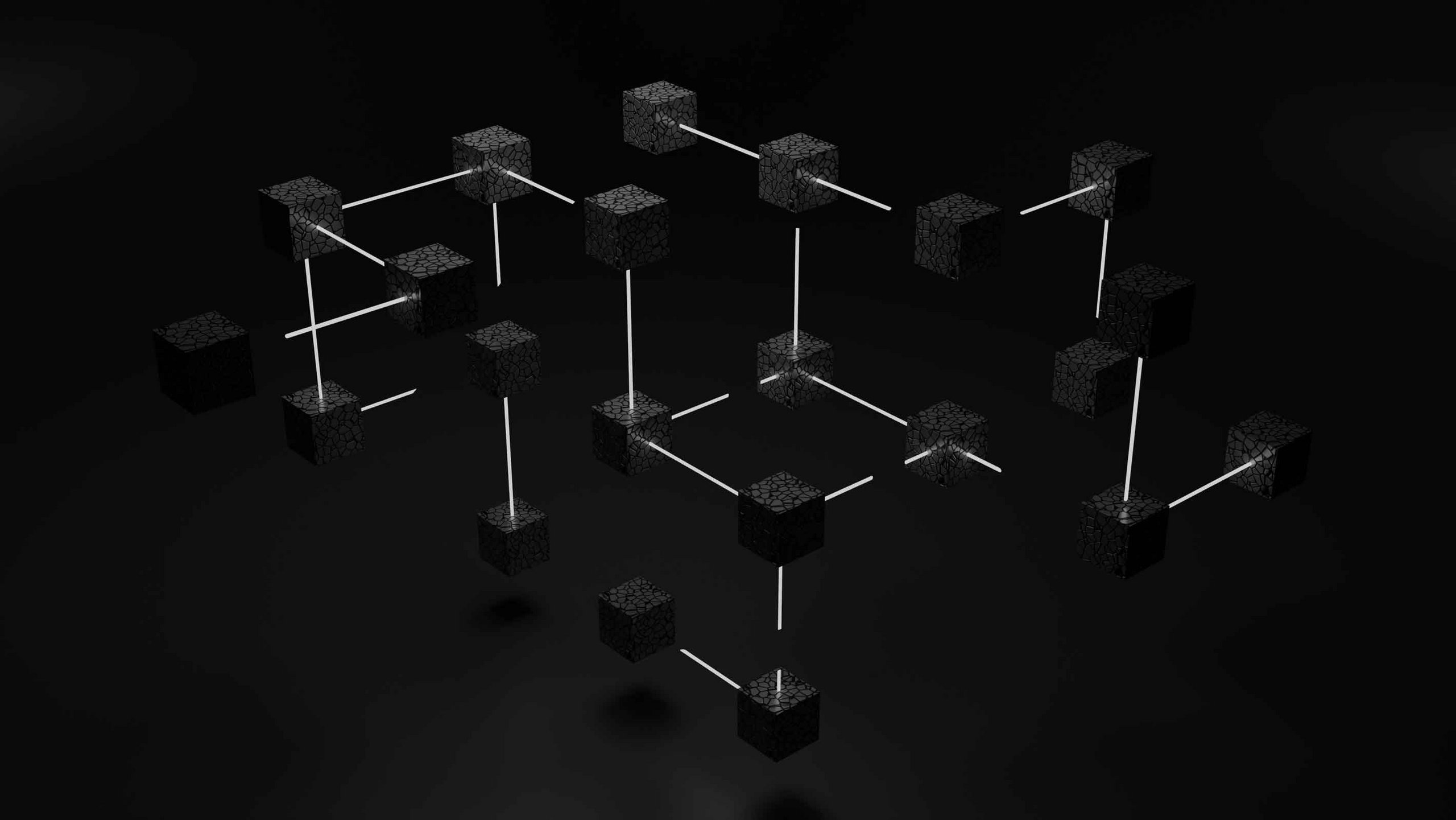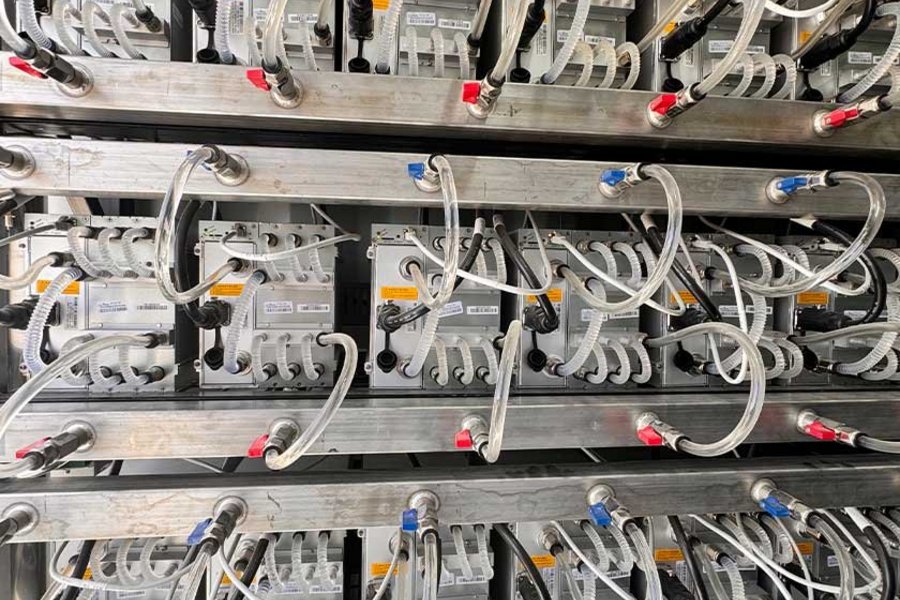
What you need to know about Kaspa (KAS)
With innovative technology and a robust, decentralized network, Kaspa (KAS) is setting new standards in the field of mining.
What ist Kaspa?
Kaspa (KAS) has taken a unique position over the past few months. With innovative technology and a robust, decentralized network, Kaspa is setting new standards in the field of mining. Here you will find everything you need to know about Kaspa mining. We will examine the outstanding features and benefits that make Kaspa a worthwhile choice.
Kaspa is a proof-of-work cryptocurrency that implements the PHANTOM GHOSTDAG protocol. Unlike traditional blockchains, which reference parallel blocks, GHOSTDAG allows these blocks to coexist and be ordered in consensus. This makes Kaspa a BlockDAG (Directed Acyclic Graph) that enables extremely high block rates and minimal confirmation times. The technology behind the BlockDAG architecture allows multiple blocks to be generated per second. Currently, the block rate is one block per second, with plans to increase this to up to ten blocks per second.
- Security Features: Kaspa uses kHeavyHash, a modified HeavyHash algorithm that is energy-efficient and offers high hash performance per watt. This algorithm is also future-proof and supports future optical mining systems.
Decentralization: Kaspa is a fully decentralized, open-source project with no central governance or business model. It was initiated by DAGlabs and launched without pre-mining or pre-allocated coins.
Why Mine Kaspa?
Kaspa stands out primarily due to its innovative technology and unique approach. While many projects operate with complex and often insecure mechanisms, Kaspa relies on proven and simple principles to achieve strong results. Why should miners and investors consider Kaspa? What makes Kaspa so special and future-proof?
- Simple, Yet Robust Technology: Kaspa achieves high performance with simple and well-understood tools. Unlike Proof-of-Stake (PoS) cryptocurrencies, which are often complex and insecure, Kaspa offers a proven secure solution based on simple Proof-of-Work (PoW) principles.
- High Scalability: Thanks to the BlockDAG architecture, Kaspa can process a large number of transactions per second, making it one of the most scalable cryptocurrencies.
- Fast Transaction Confirmations: Thanks to parallel processing and GHOSTDAG technology, transactions are confirmed almost instantly.
The Vision of Kaspa
Kaspa aims to push the boundaries of current blockchain technology, providing a solution that meets the high demands of the digital economy. Inspired by Satoshi’s original vision of a peer-to-peer electronic cash system, Kaspa strives to operate as fast and efficiently as the internet while upholding the principles of decentralization and security. The following points, defined by the Bitkern team, highlight the strengths of KAS:
Overcoming the Limits of Nakamoto Consensus: Kaspa builds on the Nakamoto Consensus, extending it through the implementation of the PHANTOM GHOSTDAG protocol. While the Nakamoto Consensus traditionally relies on a linear blockchain, Kaspa uses a BlockDAG (Directed Acyclic Graph) that allows for parallel blocks. This leads to extremely high block rates and minimal confirmation times.
Technological Innovations and Scalability: Kaspa’s BlockDAG architecture offers impressive scalability. Unlike linear blockchains that quickly reach their limits with high transaction volumes, Kaspa can process a large number of transactions in parallel. This high scalability is crucial for integrating Kaspa into various web applications and achieving mainstream adoption.
Minimizing Latency and Instant Confirmations: One of Kaspa’s main priorities is minimizing latency in transaction processing. The network aims to keep the time to first confirmation as low as possible. Thanks to GHOSTDAG technology, transactions are confirmed almost immediately after they are published. This is particularly important for applications where fast transactions and low latency are crucial, such as in e-commerce and financial services.
Decentralization and Security: Kaspa is a fully decentralized network with no central governance structures. Anyone can participate and contribute to the network’s security. The kHeavyHash algorithm, a modified form of HeavyHash, plays a central role in Kaspa’s security architecture. This algorithm is not only energy-efficient but also extremely secure. It maximizes hash performance per watt and is future-proof, being compatible with future optical mining systems.
Adhering to Satoshi’s Principles: While Bitcoin is considered the ultimate store of value (e-gold), Kaspa aims to fulfill Satoshi’s original vision of a peer-to-peer electronic cash system (e-cash). Kaspa optimizes latency and allows peripheral nodes controlling only a small portion of the hash rate to mine blocks very frequently and asynchronously. This is crucial for minimizing threats from frontrunning and Miner Extractable Value (MEV).
Future-Proof Architecture and Layer-2 Solutions: Kaspa plans to introduce sub-networks and Layer-2 solutions to further enhance functionality and scalability. Sub-networks allow for specialized use cases that are separate but still interoperable with the main chain. Layer-2 solutions based on rollup technology are intended to decouple the computational load from the main chain and further reduce transaction costs.
By combining BlockDAG technology, energy-efficient mining, and a strong community, Kaspa is well-positioned to shape the future of cryptocurrencies and fulfill Satoshi Nakamoto’s original vision.
Kaspa Mining: What You Need to Know
With a robust, decentralized structure and an innovative mining algorithm, Kaspa presents an attractive option for miners seeking efficiency and security. Here are the essential aspects of Kaspa mining you need to know.
Mining Mechanism: Kaspa’s mining mechanism is based on the kHeavyHash algorithm, an optimized and energy-efficient variant of the HeavyHash algorithm. kHeavyHash utilizes matrix multiplication framed into two Keccacs, leading to high hash power per watt. This efficiency allows mining on various hardware platforms, including GPUs (Graphics Processing Units), FPGAs (Field Programmable Gate Arrays), and future specialized mining devices.
Block Reward and Emission Plan: The current block reward for mining Kaspa is 98 KAS. Kaspa has a total supply of 28.7 billion coins, supporting the network’s long-term sustainability. The emission plan of Kaspa is designed so that the reward halves once per year. This halving occurs through smooth monthly reductions by the factor (1/2)^(1/12), ensuring a steady yet sustainable reduction of new coins.
Decentralization in Mining: A key advantage of Kaspa is its high decentralization in mining. Thanks to the BlockDAG architecture, Kaspa can support a larger number of miners, promoting decentralization and enhancing network security. Unlike traditional blockchains often dominated by central mining pools, Kaspa enables effective solo mining even at lower hash rates.
Efficiency and Sustainability: Kaspa’s kHeavyHash algorithm is not only energy-efficient but also contributes to the network’s sustainability. Additionally, the BlockDAG architecture ensures that no blocks are wasted, further increasing the network’s efficiency.
Getting Started with Kaspa Mining: To start mining Kaspa, you need specialized hardware and the right mining software. GPUs are currently the most common hardware for Kaspa mining, but FPGAs and future specialized mining devices also offer potential. Our latest Kaspa miner bundles can be found on our Kaspa mining page: www.bitkern.com/de/kaspa-mining.
Future Prospects and Trends for Kaspa (KAS)
Through continuous technological innovation and the promotion of decentralization, Kaspa is poised for a promising future. As the network grows and evolves, miners and investors can benefit long-term from the advantages of this dynamic and advanced network. The Bitkern team has summarized some of the key future prospects and trends that are important for the KAS community:
Technological Innovations: The ongoing development of mining hardware and software, including more efficient GPUs, FPGAs, and specialized ASICs, promises higher efficiency and profitability for Kaspa mining.
Decentralization and Network Growth: With the increasing adoption of Kaspa, the network could further expand, enhancing decentralization and security. A broader base of miners and nodes strengthens resilience against attacks.
Community Engagement: Active community involvement is essential for the network’s development. By sharing knowledge and resources, innovative solutions can be developed, further strengthening the network.
Mainstream Integration: The growing acceptance of cryptocurrencies in the mainstream and partnerships with blockchain projects and financial institutions could increase the demand for Kaspa and offer new application possibilities.
Promising Profit Potential with Kaspa Mining
Kaspa mining offers impressive profit potential and strong returns on investment (ROI). Thanks to its innovative BlockDAG technology and energy-efficient mining algorithms, Kaspa is optimally positioned to experience significant value growth in the coming months and years. For investors, this means the opportunity to benefit from groundbreaking developments in the cryptocurrency market.
With its decentralized community and strong focus on sustainability, Kaspa provides an ideal platform for miners seeking long-term and stable returns. The earning potential is further enhanced by the growing adoption and increasing network value of Kaspa.
At Bitkern, we help you fully realize this potential. With state-of-the-art hardware and unbeatable hosting rates, we provide the perfect foundation for your successful Kaspa mining. Our experts are here to support you every step of the way, ensuring that you operate profitably and efficiently from the start.
Contact us today to learn more about our Kaspa miner hosting options and hardware solutions. Get started with Kaspa mining and Bitkern now!




![[Translate to Englisch:] [Translate to Englisch:]](/fileadmin/_processed_/6/2/csm_hydromining-paraguay_b8f118b763.jpg)